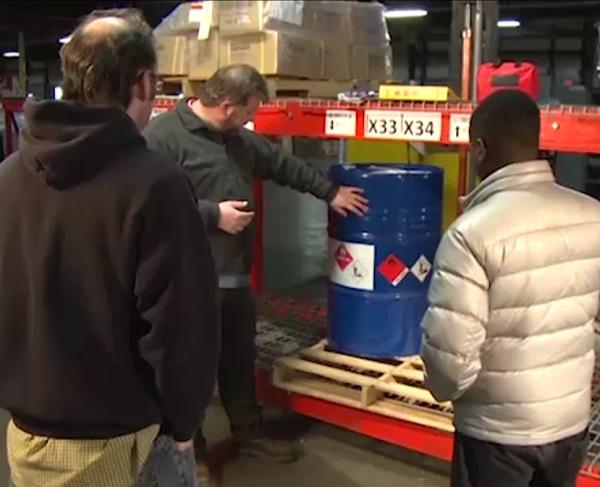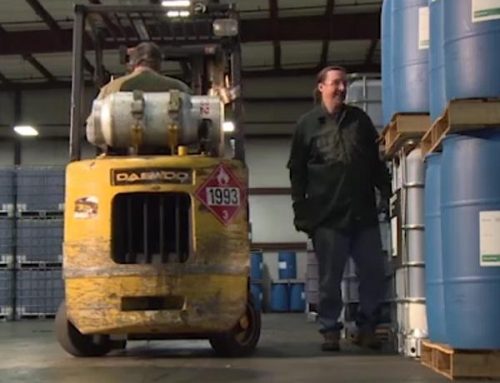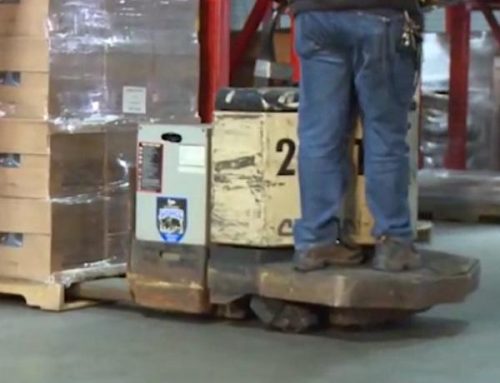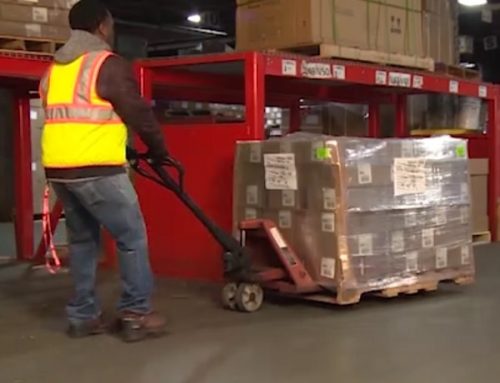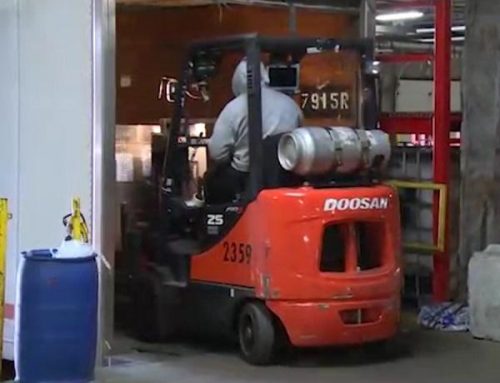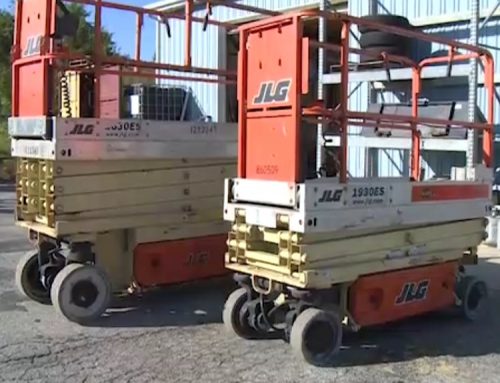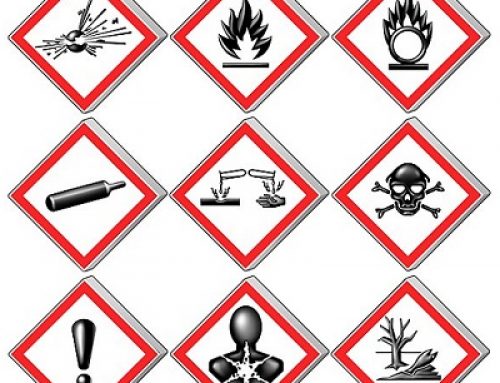Materials handling is the process of loading, unloading, storing, stacking and moving objects of all shapes and sizes in warehouses and industrial facilities. While this is an essential job function that keeps business and industry running efficiently, it can also be quite dangerous. Thousands of warehouse workers and other industrial personnel are injured or even killed each year while performing materials handling tasks. However, many of these accidents can be prevented by following proper safety procedures and best practices. This article summarizes the major points covered in a materials handling safety training program, offering guidance on how to avoid injuries when handling materials in warehouses and industrial settings. Topics covered include preparing for work, ergonomics, lifting techniques, working with materials handling equipment, and forklift safety. By understanding the potential hazards involved with materials handling and the proper precautions to take, workers can keep themselves safe and avoid painful injuries.
Preparing for Safe Materials Handling:
Before starting a warehouse or industrial shift that will involve substantial materials handling, employees should take time to prepare themselves both physically and mentally. Ask yourself, “Am I ready to work safely?”. If the answer is no for any reason, you should address potential issues before clocking in.
Being under the influence of drugs or alcohol can greatly increase the chances of causing or being injured in a materials handling accident. Even small amounts can negatively affect balance, perception and good judgement. To keep yourself and others safe, always arrive to work sober and drug-free.
Reporting for duty with an existing injury or other physical limitation is also extremely hazardous. Handling materials requires physical exertion, sometimes under challenging conditions. An already weakened or pained body is prone to further damage, or may give out at an inopportune time and cause a fall or other accident. Be upfront with supervisors about any conditions that could affect your materials handling capabilities or safety.
In addition to general readiness, employees must wear appropriate personal protective equipment (PPE) for the required tasks. Though specific requirements vary, most warehouse work necessitates sturdy gloves and slip-resistant, steel-toe work boots at a minimum. Ask supervisors what additional PPE may be required, such as back braces, safety glasses, hard hats or high-visibility vests. Taking a few minutes at the start of the shift to don proper protective gear is an easy and effective way to avoid many common foot, hand and body injuries.
Before physically handling any materials, take time to observe warning labels affixed to containers and objects. These labels advise about special precautions, handling instructions, or hazards associated with the contents. Understanding this information ahead of time allows workers to plan safe movements and lifting techniques.
Taking a minute to mentally plan the details of a move before undertaking it can also prevent mishaps. Know your route and destination thoroughly, and walk it ahead of time if possible. This allows you to remove obstructions and identify potential slippery areas. Planning each materials handling job and moving deliberately is far safer than trying to lift and maneuver objects spontaneously in a cluttered environment.
Practicing Safe Ergonomics:
Materials handling often requires employees to move their bodies in very physically demanding ways. Proper ergonomics, or ensuring that the body moves efficiently without undue strain, is crucial to avoid acute and long-term injuries.
The human body functions optimally when muscles and joints operate within their natural ranges and capacities. Movements outside of these norms require overexertion that damages muscles, tendons and ligaments. When lifting, lowering, reaching, twisting or using tools, be mindful not to force your body into unnatural or extreme postures:
- Leaning far to the side when pushing an object onto a shelf can strain hips and shoulders. Always face items directly.
- Reaching backwards or overhead to lift or grab something taxes muscles tremendously. Move your whole body closer first.
- Bending forward at the waist to lift puts enormous pressure on the lower back. Always bend knees and squat while keeping the back straight.
If a task requires an awkward posture, stop and reassess. Can you rearrange your body or the materials to avoid strain? Get help from coworkers? Use mechanical lifting aids? The body was not built for repetitive heavy lifting and twisting actions. Find ways to accomplish the task without compromising your physical safety.
Overexertion is another primary cause of materials handling injuries. Work tasks often require large amounts of physical effort, but attempting to supply too much force can cause slip-ups or torn muscles. Do not lift objects that are beyond your individual capability. Use tools and equipment designed for the job, and leverage helpers when needed. Rushing through handling tasks in an unsafe manner only leads to accidents and injuries. Work deliberately and recognize your physical limitations.
Repetitive motion injuries gradually accumulate through consistent unnatural movements like grasping, twisting and bending. Vary materials handling tasks throughout the day whenever possible. If required to perform a repetitive task for hours, take regular breaks to stretch and change positions. Report any tingling, numbness or soreness promptly to supervisors so alternate duty arrangements can be made before severe damage occurs.
Proper Lifting Techniques:
Back injuries are among the most common materials handling mishaps, usually caused by improper lifting. Safe lifting techniques are crucial, but hazard awareness also comes into play before you even touch an object. Size up every load and ask:
- Is it too heavy for one person to reasonably lift?
- Is it an awkward shape that will be difficult to grasp and balance?
- When lifted, will it obstruct your vision and mobility?
If the answer to any question gives you pause, do not lift the object alone. Use tools, break it into smaller loads or get help. When team lifting, clearly communicate who will lead and direct movements.
When lifting solo is safe, follow these proper techniques to avoid back strain:
- Stand close with a solid, balanced stance. Feet should be about shoulder width apart.
- Bend at the knees to lower yourself, keeping back straight. Do not bend forward at the waist.
- Firmly grip the load at opposite corners or ends.
- Lift by straightening knees to raise the load close to your body. Keep back straight.
- Carry the load close to you with head up, walking carefully. Do not twist at the waist.
- Use leg muscles to bend knees again when lowering the load to its destination.
Lifting objects overhead puts extreme strain on the back, neck and shoulders. Use a step stool or platform to minimize vertical distance. Never lift anything above chest level. When carrying with a coworker, have the taller person position themselves under the higher end. Again, communicate clearly on each step.
Leverage Materials Handling Tools Safely:
Trying to carry all loads personally would waste massive amounts of time and energy. A variety of materials handling tools and equipment provide the leverage and efficiency needed to move items safely. While extremely useful, these tools must be used with care to prevent injuries.
Always inspect tools like hand trucks, dollies, carts, pallet jacks and forklifts thoroughly before use. Look for damage, missing pieces or other deficiencies per manufacturer instructions. Damaged equipment should be reported and taken out of service until repaired. Never use faulty units.
Two-wheeled hand trucks utilize the physics of leverage to make loads easier to manage. However, understanding weight distribution is key to avoiding accidents. Position loads tight to the truck back, with heaviest items on the bottom for maximum stability. Do not overload or stack higher than the backrest. Secure unstable shapes with straps if possible.
When tipping a hand truck back, stand behind it with one foot braced on the axle for support. Use both hands and gentle force to achieve balance over the wheels. Carefully push hand trucks by gripping the handles firmly, keeping the load under control. Do not pull hand trucks, which puts dangerous strain on arms and shoulders. Make “controlled landings” when lowering as well, releasing weight gradually while keeping hands in place.
Dollies add increased stability for large, bulky objects. Wrap or interlock items to keep them secure. Travel directly behind dollies while pushing, actively steering to avoid collisions in crowded areas. Park safely out of aisles and walkways when not in use.
Powered pallet jacks can greatly facilitate moving loaded pallets. Ensure forks are centered and fully inserted before lifting to prevent damaged goods or broken pallets. While typically safest pushing pallet jacks, pulling can provide better visibility in narrow spaces. Always look and steer carefully to avoid crashes. Lower pallets fully before removing jacks.
Forklifts offer immense materials handling versatility, but also potential dangers if mishandled. Always wear seatbelts, drive at safe speeds and watch for pedestrians. Carry loads close to the ground with back tilted for stability. Sound the horn at intersections and yield to workers on foot. Never jump from tipping forklifts – brace, lean away from the fall and hang on. Pedestrians near operating forklifts need to maintain safe distances and use designated walkways. Be highly alert near corners and intersections.
Conclusion:
Moving materials efficiently is a vital function in warehouses and industrial facilities, but also entails serious potential risks if proper procedures aren’t followed. Thousands of preventable injuries occur each year from improper lifting, carrying, stacking and handling of objects. By being mindful and proactive about safety, workers can avoid becoming part of this statistic. Always assess your physical condition honestly before a shift. Use mechanical advantages like hand trucks and dollies when possible, rather than physical exertion alone. Keep all lifting motions smooth and natural. Plan every move in advance. Protect hands and feet with gloves and boots. Report any pains or equipment issues immediately. Materials handling can be performed safely with commitment, common sense and awareness. Your health and safety should be the top priority.
This extensive guide on avoiding injuries during materials handling in warehouses and industry is a crucial resource for any worker engaged in these activities. It thoroughly covers everything from the importance of preparation, understanding ergonomics, and proper lifting techniques, to safely working with materials handling equipment like forklifts and pallet jacks. This comprehensive knowledge is vital for maintaining a safe working environment, but practical application and reinforcement through training are equally important. Our specialized online safety training course serves as the perfect complement to this guide, offering an in-depth exploration and practical application of these vital safety principles.
Elevate your team’s safety and efficiency with Our “Materials Handling Safety” online training course. This essential training is specially crafted for workplaces where materials handling is a regular activity, aiming to drastically reduce the thousands of injuries and fatalities that occur each year in this sector.
Why is Our Materials Handling Safety Training Essential?
- Tailored for Material Handling Challenges: Our course comprehensively covers the various hazards associated with materials handling and offers effective strategies to manage these risks.
- Versatile Learning Options: With a range of formats including Micro-Learning modules, full-length online courses, DVDs, and interactive CD courses, we cater to various learning preferences and needs.
- In-Depth Topic Coverage: Topics include preparing for safe work, understanding ergonomics, safe lifting techniques, using hand trucks and dollies, operating platform trucks, carts, pallet jacks, and forklift safety.
- Engaging and Practical Learning Experience: Our courses are designed to be engaging, ensuring that the crucial safety information is not only learned but also retained and applied.
- Bilingual Course Availability: To accommodate diverse workforces, our training is available in both English and Spanish.
- Efficient MicroLearning Curriculum: For those with time constraints, our MicroLearning curriculum offers concise 3-5 minute courses focused on key safety aspects.
- SCORM 1.2 Compliant: Our courses are easily integrable with existing training systems, ensuring seamless implementation into your safety training program.
- Preventing Accidents and Enhancing Safety: Proper training in materials handling is vital for preventing accidents, reducing injuries, and promoting a culture of safety in the workplace.
Invest in Our “Materials Handling Safety” training to equip your team with the necessary skills and knowledge for safe and efficient materials handling.
Empower Your Team with Our Materials Handling Safety Training – Your Strategic Move Towards a Safer, More Efficient Workplace!
Click below for a free demo:


